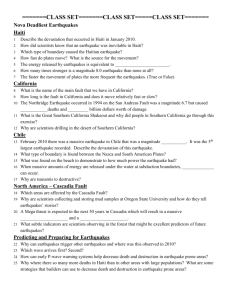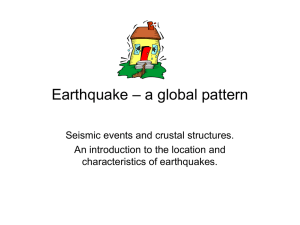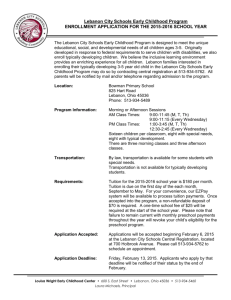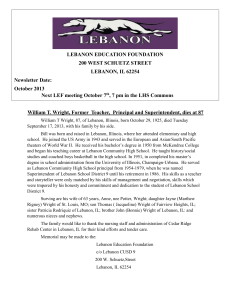Lebanon Humanitarian Background Additional Information
advertisement
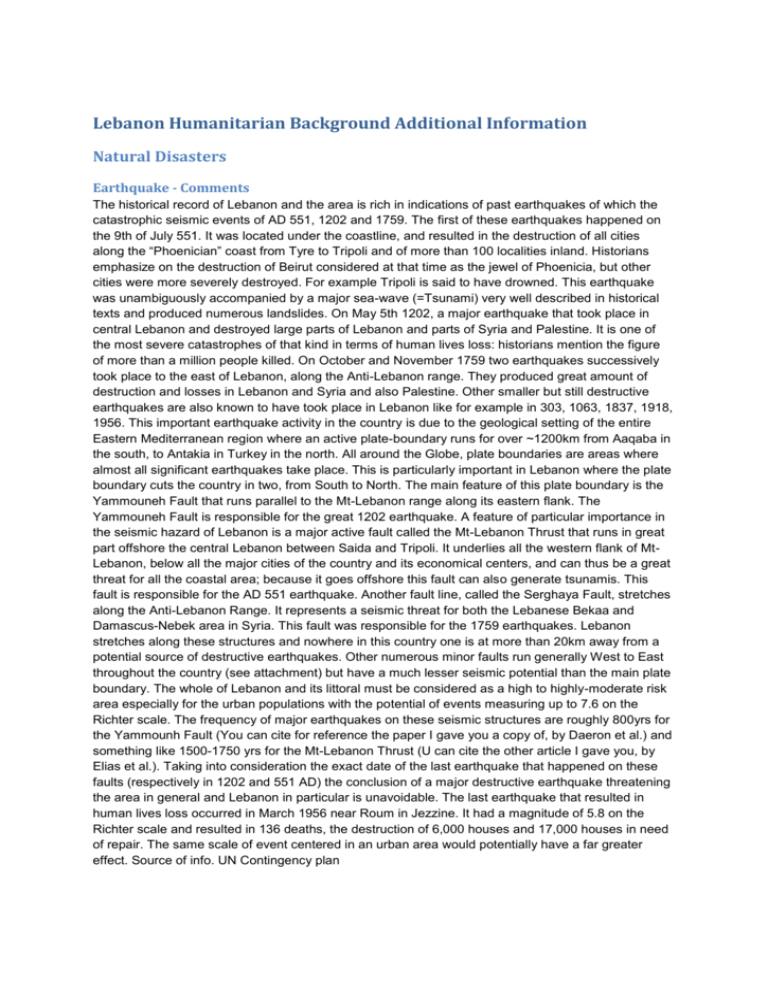
Lebanon Humanitarian Background Additional Information Natural Disasters Earthquake - Comments The historical record of Lebanon and the area is rich in indications of past earthquakes of which the catastrophic seismic events of AD 551, 1202 and 1759. The first of these earthquakes happened on the 9th of July 551. It was located under the coastline, and resulted in the destruction of all cities along the “Phoenician” coast from Tyre to Tripoli and of more than 100 localities inland. Historians emphasize on the destruction of Beirut considered at that time as the jewel of Phoenicia, but other cities were more severely destroyed. For example Tripoli is said to have drowned. This earthquake was unambiguously accompanied by a major sea-wave (=Tsunami) very well described in historical texts and produced numerous landslides. On May 5th 1202, a major earthquake that took place in central Lebanon and destroyed large parts of Lebanon and parts of Syria and Palestine. It is one of the most severe catastrophes of that kind in terms of human lives loss: historians mention the figure of more than a million people killed. On October and November 1759 two earthquakes successively took place to the east of Lebanon, along the Anti-Lebanon range. They produced great amount of destruction and losses in Lebanon and Syria and also Palestine. Other smaller but still destructive earthquakes are also known to have took place in Lebanon like for example in 303, 1063, 1837, 1918, 1956. This important earthquake activity in the country is due to the geological setting of the entire Eastern Mediterranean region where an active plate-boundary runs for over ~1200km from Aaqaba in the south, to Antakia in Turkey in the north. All around the Globe, plate boundaries are areas where almost all significant earthquakes take place. This is particularly important in Lebanon where the plate boundary cuts the country in two, from South to North. The main feature of this plate boundary is the Yammouneh Fault that runs parallel to the Mt-Lebanon range along its eastern flank. The Yammouneh Fault is responsible for the great 1202 earthquake. A feature of particular importance in the seismic hazard of Lebanon is a major active fault called the Mt-Lebanon Thrust that runs in great part offshore the central Lebanon between Saida and Tripoli. It underlies all the western flank of MtLebanon, below all the major cities of the country and its economical centers, and can thus be a great threat for all the coastal area; because it goes offshore this fault can also generate tsunamis. This fault is responsible for the AD 551 earthquake. Another fault line, called the Serghaya Fault, stretches along the Anti-Lebanon Range. It represents a seismic threat for both the Lebanese Bekaa and Damascus-Nebek area in Syria. This fault was responsible for the 1759 earthquakes. Lebanon stretches along these structures and nowhere in this country one is at more than 20km away from a potential source of destructive earthquakes. Other numerous minor faults run generally West to East throughout the country (see attachment) but have a much lesser seismic potential than the main plate boundary. The whole of Lebanon and its littoral must be considered as a high to highly-moderate risk area especially for the urban populations with the potential of events measuring up to 7.6 on the Richter scale. The frequency of major earthquakes on these seismic structures are roughly 800yrs for the Yammounh Fault (You can cite for reference the paper I gave you a copy of, by Daeron et al.) and something like 1500-1750 yrs for the Mt-Lebanon Thrust (U can cite the other article I gave you, by Elias et al.). Taking into consideration the exact date of the last earthquake that happened on these faults (respectively in 1202 and 551 AD) the conclusion of a major destructive earthquake threatening the area in general and Lebanon in particular is unavoidable. The last earthquake that resulted in human lives loss occurred in March 1956 near Roum in Jezzine. It had a magnitude of 5.8 on the Richter scale and resulted in 136 deaths, the destruction of 6,000 houses and 17,000 houses in need of repair. The same scale of event centered in an urban area would potentially have a far greater effect. Source of info. UN Contingency plan



